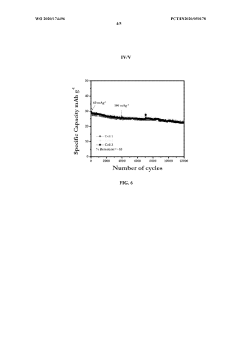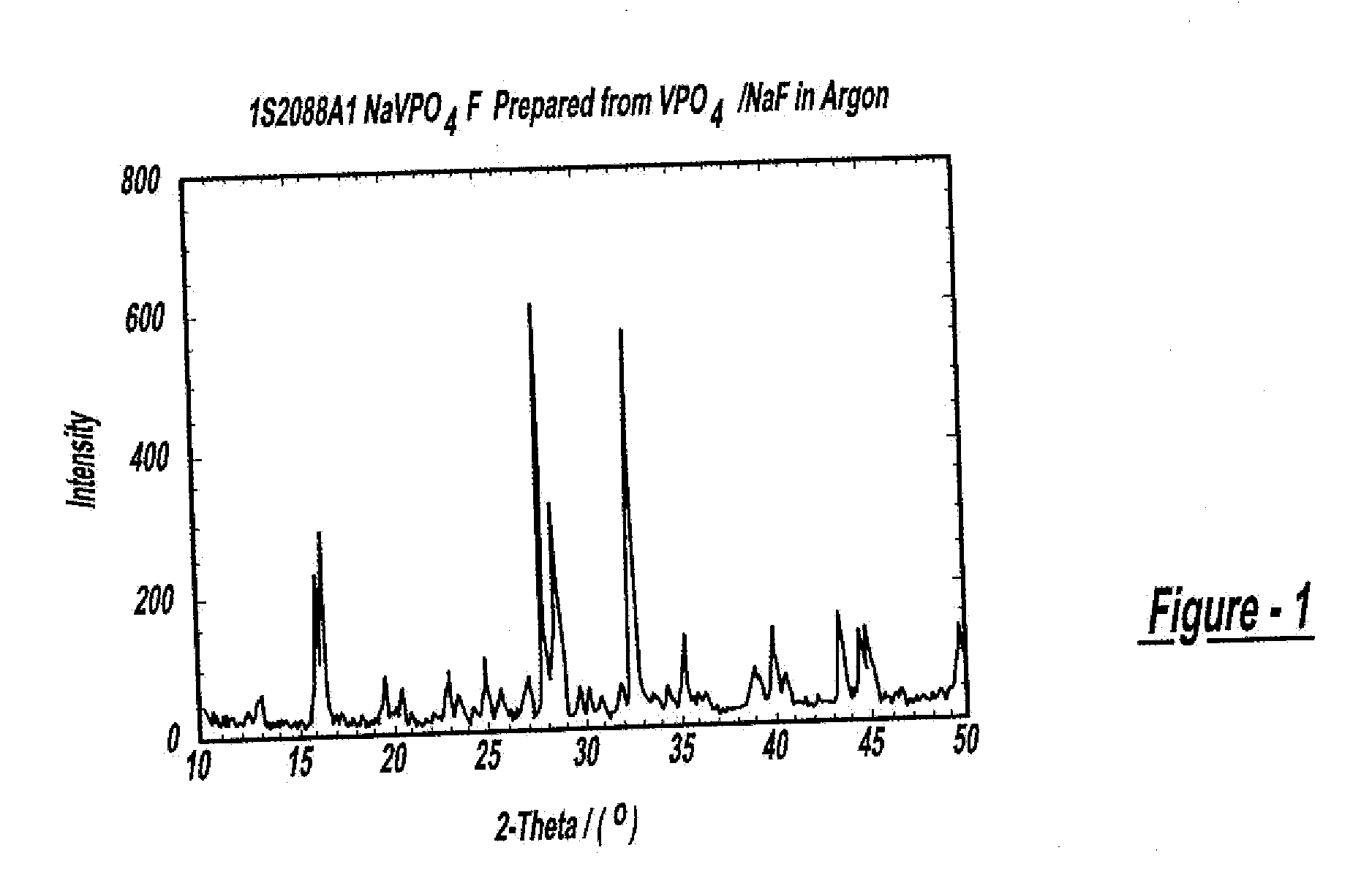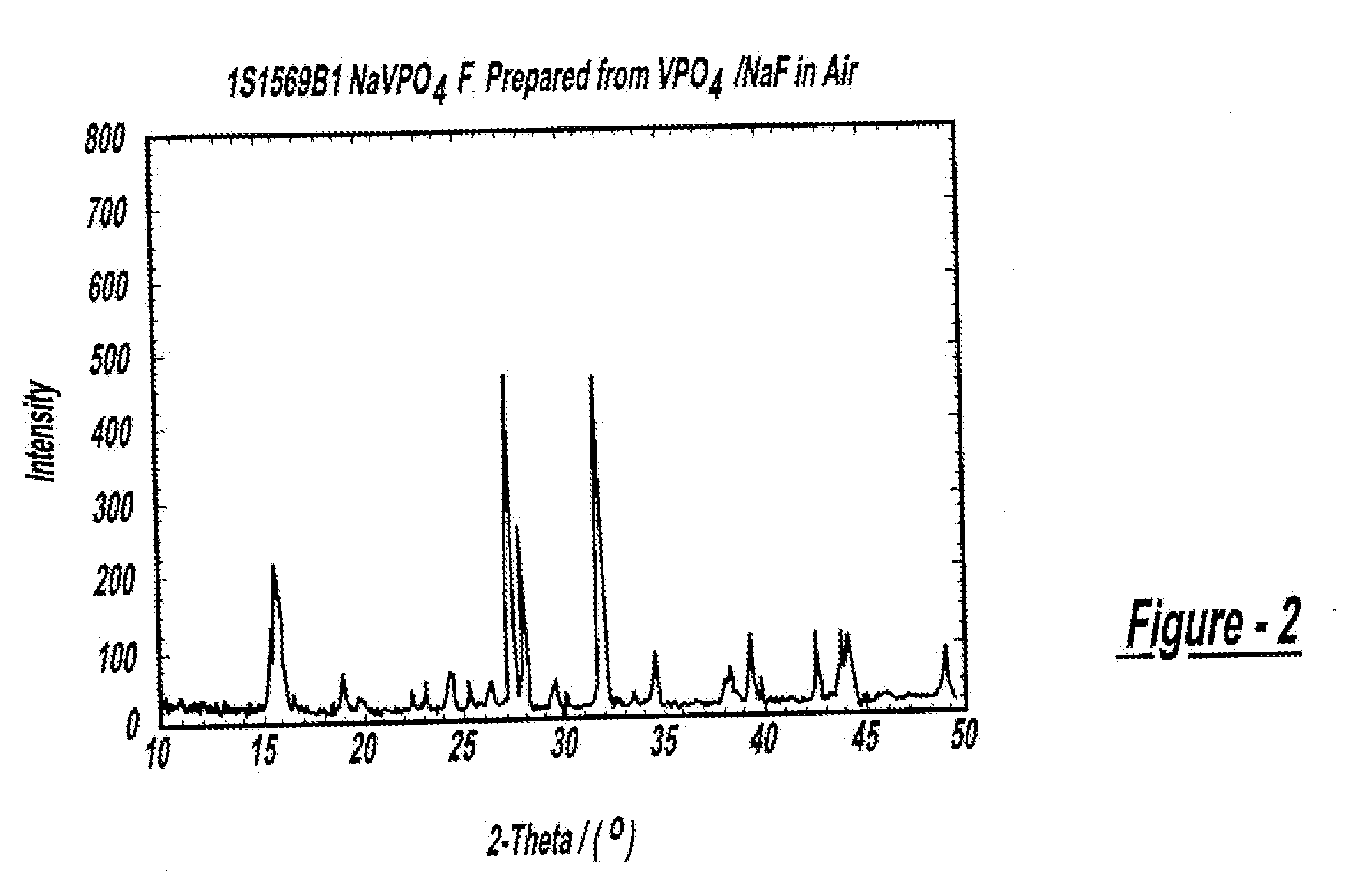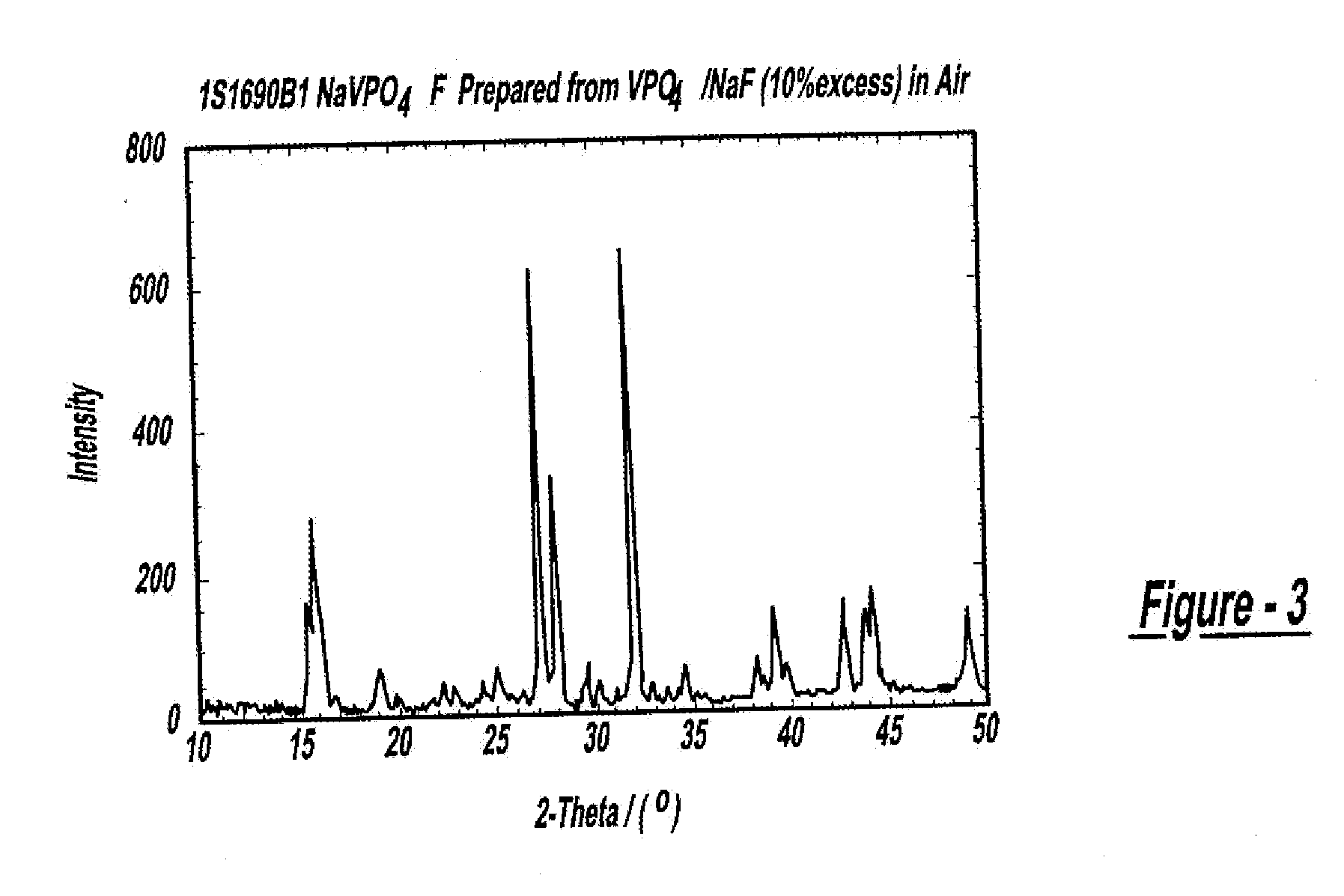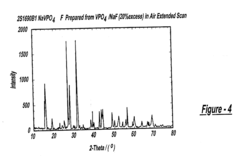Wireless Sensor Networks Powered by Sodium Ion Batteries
AUG 7, 20259 MIN READ
Generate Your Research Report Instantly with AI Agent
Patsnap Eureka helps you evaluate technical feasibility & market potential.
SIB-WSN Background and Objectives
Wireless Sensor Networks (WSNs) have emerged as a transformative technology in the realm of data collection and environmental monitoring. These networks consist of spatially distributed autonomous sensors that cooperatively monitor physical or environmental conditions. The evolution of WSNs has been closely tied to advancements in energy storage technologies, as the longevity and reliability of these networks heavily depend on their power sources.
In recent years, sodium-ion batteries (SIBs) have gained significant attention as a promising alternative to traditional lithium-ion batteries. The integration of SIBs with WSNs represents a cutting-edge research direction that aims to address the long-standing challenges of power sustainability and cost-effectiveness in sensor networks.
The development of SIB-powered WSNs is driven by several key factors. Firstly, the abundance and wide geographical distribution of sodium resources offer a more sustainable and economically viable option compared to lithium. This aspect is particularly crucial for large-scale deployment of WSNs in remote or resource-constrained environments.
Secondly, SIBs have demonstrated potential advantages in terms of safety and thermal stability, which are critical considerations for WSNs operating in diverse and often harsh conditions. The lower risk of thermal runaway in SIBs compared to lithium-ion batteries makes them an attractive option for applications where safety is paramount.
The primary objective of research in SIB-WSNs is to develop a new generation of sensor networks that can operate for extended periods without the need for frequent battery replacements or recharging. This goal aligns with the broader trend towards sustainable and low-maintenance IoT solutions.
Another key aim is to optimize the performance of SIBs specifically for the unique power requirements of WSNs. This involves addressing challenges such as improving energy density, enhancing charge-discharge cycle life, and developing battery management systems tailored to the intermittent nature of sensor network operations.
Furthermore, research in this field seeks to explore novel WSN architectures and protocols that can leverage the specific characteristics of SIBs. This includes developing energy-aware routing algorithms and adaptive duty cycling mechanisms that can maximize the utilization of available battery capacity.
The integration of SIBs with WSNs also opens up new possibilities for energy harvesting and storage systems. Researchers are investigating hybrid power solutions that combine SIBs with renewable energy sources such as solar or vibration energy, aiming to create self-sustaining sensor networks capable of long-term autonomous operation.
As the field progresses, there is a growing focus on the scalability and manufacturability of SIB-WSN solutions. The ultimate goal is to develop technologies that can be readily adopted in various industries, from environmental monitoring and agriculture to smart cities and industrial IoT applications.
In recent years, sodium-ion batteries (SIBs) have gained significant attention as a promising alternative to traditional lithium-ion batteries. The integration of SIBs with WSNs represents a cutting-edge research direction that aims to address the long-standing challenges of power sustainability and cost-effectiveness in sensor networks.
The development of SIB-powered WSNs is driven by several key factors. Firstly, the abundance and wide geographical distribution of sodium resources offer a more sustainable and economically viable option compared to lithium. This aspect is particularly crucial for large-scale deployment of WSNs in remote or resource-constrained environments.
Secondly, SIBs have demonstrated potential advantages in terms of safety and thermal stability, which are critical considerations for WSNs operating in diverse and often harsh conditions. The lower risk of thermal runaway in SIBs compared to lithium-ion batteries makes them an attractive option for applications where safety is paramount.
The primary objective of research in SIB-WSNs is to develop a new generation of sensor networks that can operate for extended periods without the need for frequent battery replacements or recharging. This goal aligns with the broader trend towards sustainable and low-maintenance IoT solutions.
Another key aim is to optimize the performance of SIBs specifically for the unique power requirements of WSNs. This involves addressing challenges such as improving energy density, enhancing charge-discharge cycle life, and developing battery management systems tailored to the intermittent nature of sensor network operations.
Furthermore, research in this field seeks to explore novel WSN architectures and protocols that can leverage the specific characteristics of SIBs. This includes developing energy-aware routing algorithms and adaptive duty cycling mechanisms that can maximize the utilization of available battery capacity.
The integration of SIBs with WSNs also opens up new possibilities for energy harvesting and storage systems. Researchers are investigating hybrid power solutions that combine SIBs with renewable energy sources such as solar or vibration energy, aiming to create self-sustaining sensor networks capable of long-term autonomous operation.
As the field progresses, there is a growing focus on the scalability and manufacturability of SIB-WSN solutions. The ultimate goal is to develop technologies that can be readily adopted in various industries, from environmental monitoring and agriculture to smart cities and industrial IoT applications.
Market Analysis for SIB-Powered WSNs
The market for Wireless Sensor Networks (WSNs) powered by Sodium Ion Batteries (SIBs) is poised for significant growth, driven by the increasing demand for sustainable and cost-effective energy solutions in IoT applications. This emerging market segment combines the advantages of WSNs' versatility with the promising characteristics of SIBs, creating a unique value proposition for various industries.
The global WSN market is experiencing robust growth, with projections indicating a compound annual growth rate (CAGR) of over 18% from 2021 to 2026. This growth is primarily fueled by the rapid adoption of IoT technologies across industries such as agriculture, healthcare, industrial automation, and smart cities. Within this broader market, SIB-powered WSNs are expected to carve out a significant niche, particularly in applications requiring long-term, maintenance-free operation.
The potential market size for SIB-powered WSNs is substantial, with early estimates suggesting a market value reaching several billion dollars by 2030. This projection is based on the growing interest in sustainable energy solutions and the increasing awareness of the limitations of traditional lithium-ion batteries in certain WSN applications.
Key market drivers for SIB-powered WSNs include the rising demand for eco-friendly energy storage solutions, the need for extended battery life in remote sensing applications, and the push for reduced maintenance costs in large-scale sensor deployments. Industries such as environmental monitoring, precision agriculture, and infrastructure health monitoring are expected to be early adopters of this technology.
The market landscape for SIB-powered WSNs is currently in its nascent stage, with a mix of established WSN manufacturers, battery technology companies, and startups entering the space. Competition is expected to intensify as the technology matures, leading to potential partnerships and acquisitions to consolidate market share.
Geographically, North America and Europe are anticipated to lead the adoption of SIB-powered WSNs, driven by stringent environmental regulations and a strong focus on sustainable technologies. However, the Asia-Pacific region is expected to witness the fastest growth, fueled by rapid industrialization and government initiatives promoting green technologies.
Challenges in the market include the need for further improvements in SIB technology to match the energy density of lithium-ion batteries, concerns about the long-term stability of sodium-ion cells, and the initial higher costs associated with new technology adoption. However, these challenges are expected to be addressed as research progresses and economies of scale are achieved in production.
In conclusion, the market for SIB-powered WSNs presents a promising opportunity for innovation and growth. As the technology advances and costs decrease, it is poised to disrupt traditional WSN power solutions, offering a more sustainable and potentially more cost-effective alternative for a wide range of applications.
The global WSN market is experiencing robust growth, with projections indicating a compound annual growth rate (CAGR) of over 18% from 2021 to 2026. This growth is primarily fueled by the rapid adoption of IoT technologies across industries such as agriculture, healthcare, industrial automation, and smart cities. Within this broader market, SIB-powered WSNs are expected to carve out a significant niche, particularly in applications requiring long-term, maintenance-free operation.
The potential market size for SIB-powered WSNs is substantial, with early estimates suggesting a market value reaching several billion dollars by 2030. This projection is based on the growing interest in sustainable energy solutions and the increasing awareness of the limitations of traditional lithium-ion batteries in certain WSN applications.
Key market drivers for SIB-powered WSNs include the rising demand for eco-friendly energy storage solutions, the need for extended battery life in remote sensing applications, and the push for reduced maintenance costs in large-scale sensor deployments. Industries such as environmental monitoring, precision agriculture, and infrastructure health monitoring are expected to be early adopters of this technology.
The market landscape for SIB-powered WSNs is currently in its nascent stage, with a mix of established WSN manufacturers, battery technology companies, and startups entering the space. Competition is expected to intensify as the technology matures, leading to potential partnerships and acquisitions to consolidate market share.
Geographically, North America and Europe are anticipated to lead the adoption of SIB-powered WSNs, driven by stringent environmental regulations and a strong focus on sustainable technologies. However, the Asia-Pacific region is expected to witness the fastest growth, fueled by rapid industrialization and government initiatives promoting green technologies.
Challenges in the market include the need for further improvements in SIB technology to match the energy density of lithium-ion batteries, concerns about the long-term stability of sodium-ion cells, and the initial higher costs associated with new technology adoption. However, these challenges are expected to be addressed as research progresses and economies of scale are achieved in production.
In conclusion, the market for SIB-powered WSNs presents a promising opportunity for innovation and growth. As the technology advances and costs decrease, it is poised to disrupt traditional WSN power solutions, offering a more sustainable and potentially more cost-effective alternative for a wide range of applications.
SIB-WSN Technical Challenges
The integration of sodium-ion batteries (SIBs) with wireless sensor networks (WSNs) presents several technical challenges that need to be addressed for successful implementation. One of the primary concerns is the energy density of SIBs, which is currently lower than that of lithium-ion batteries. This limitation affects the overall size and weight of the power source, potentially impacting the deployment flexibility of WSN nodes in various environments.
Another significant challenge lies in the cycling stability and lifespan of SIBs when used in WSN applications. WSNs often require long-term, unattended operation, necessitating power sources with extended lifespans. While SIBs show promise in this regard, further improvements are needed to match or exceed the performance of existing battery technologies in terms of charge-discharge cycles and overall longevity.
The charging efficiency and rate capability of SIBs also present technical hurdles for SIB-WSN integration. WSNs deployed in remote or hard-to-reach locations may rely on energy harvesting techniques for recharging. The ability of SIBs to efficiently capture and store energy from low-power sources, such as solar panels or vibration harvesters, needs to be optimized to ensure sustained operation of the network.
Temperature sensitivity is another critical factor to consider. WSNs are often deployed in diverse environmental conditions, ranging from extremely cold to hot temperatures. The performance of SIBs across this wide temperature range must be carefully evaluated and improved to maintain consistent power output and prevent premature degradation of the battery cells.
Safety considerations also pose challenges in SIB-WSN integration. While SIBs are generally considered safer than lithium-ion batteries due to the lower reactivity of sodium, ensuring robust safety measures for various deployment scenarios is crucial. This includes addressing potential issues related to overcharging, over-discharging, and thermal runaway in compact WSN node designs.
The integration of SIBs with existing WSN hardware and power management systems presents additional technical challenges. Optimizing the interface between the battery and the sensor node's electronics, as well as developing efficient power management algorithms tailored to the unique characteristics of SIBs, is essential for maximizing energy utilization and extending network lifetime.
Lastly, the manufacturing and scalability of SIBs for WSN applications need to be addressed. Developing cost-effective production methods that can deliver consistent quality and performance across large-scale deployments is crucial for the widespread adoption of SIB-powered WSNs in various industries and applications.
Another significant challenge lies in the cycling stability and lifespan of SIBs when used in WSN applications. WSNs often require long-term, unattended operation, necessitating power sources with extended lifespans. While SIBs show promise in this regard, further improvements are needed to match or exceed the performance of existing battery technologies in terms of charge-discharge cycles and overall longevity.
The charging efficiency and rate capability of SIBs also present technical hurdles for SIB-WSN integration. WSNs deployed in remote or hard-to-reach locations may rely on energy harvesting techniques for recharging. The ability of SIBs to efficiently capture and store energy from low-power sources, such as solar panels or vibration harvesters, needs to be optimized to ensure sustained operation of the network.
Temperature sensitivity is another critical factor to consider. WSNs are often deployed in diverse environmental conditions, ranging from extremely cold to hot temperatures. The performance of SIBs across this wide temperature range must be carefully evaluated and improved to maintain consistent power output and prevent premature degradation of the battery cells.
Safety considerations also pose challenges in SIB-WSN integration. While SIBs are generally considered safer than lithium-ion batteries due to the lower reactivity of sodium, ensuring robust safety measures for various deployment scenarios is crucial. This includes addressing potential issues related to overcharging, over-discharging, and thermal runaway in compact WSN node designs.
The integration of SIBs with existing WSN hardware and power management systems presents additional technical challenges. Optimizing the interface between the battery and the sensor node's electronics, as well as developing efficient power management algorithms tailored to the unique characteristics of SIBs, is essential for maximizing energy utilization and extending network lifetime.
Lastly, the manufacturing and scalability of SIBs for WSN applications need to be addressed. Developing cost-effective production methods that can deliver consistent quality and performance across large-scale deployments is crucial for the widespread adoption of SIB-powered WSNs in various industries and applications.
Current SIB-WSN Solutions
01 Sodium-ion battery design for wireless sensor networks
Specialized sodium-ion battery designs are being developed to power wireless sensor networks. These batteries are optimized for low power consumption, long life, and compatibility with the unique requirements of sensor networks. The designs focus on improving energy density, cycle life, and safety features to ensure reliable operation in various environmental conditions.- Sodium-ion battery design for wireless sensor networks: Specialized sodium-ion battery designs are being developed to power wireless sensor networks. These batteries are optimized for low power consumption, long life, and compatibility with the unique requirements of sensor networks. The designs focus on improving energy density, cycle life, and safety features to ensure reliable operation in various environmental conditions.
- Energy harvesting techniques for sodium-ion battery powered sensors: Energy harvesting technologies are being integrated with sodium-ion batteries to extend the operational life of wireless sensor networks. These systems combine ambient energy sources such as solar, vibration, or thermal with sodium-ion storage to create self-sustaining power solutions. This approach reduces the need for battery replacements and enables deployment in remote or hard-to-access locations.
- Power management systems for sodium-ion battery powered sensors: Advanced power management systems are being developed to optimize the use of sodium-ion batteries in wireless sensor networks. These systems include intelligent charge control, sleep mode optimization, and adaptive power consumption algorithms. The goal is to maximize battery life while ensuring reliable sensor operation and data transmission.
- Sodium-ion battery electrode materials for sensor applications: Research is focused on developing novel electrode materials for sodium-ion batteries specifically tailored for wireless sensor network applications. These materials aim to improve capacity, rate capability, and cycling stability while being cost-effective and environmentally friendly. Nanostructured materials and composite electrodes are being explored to enhance battery performance in low-power, long-duration scenarios.
- Integration of sodium-ion batteries with sensor node design: Efforts are being made to seamlessly integrate sodium-ion batteries into the overall design of wireless sensor nodes. This includes developing compact form factors, optimizing thermal management, and creating modular designs that allow for easy battery replacement or upgrades. The integration also considers the specific power requirements of different sensor types and communication protocols used in various applications.
02 Energy harvesting techniques for sodium-ion battery powered sensors
Energy harvesting technologies are being integrated with sodium-ion batteries to extend the operational life of wireless sensor networks. These systems combine ambient energy sources such as solar, vibration, or thermal with sodium-ion storage to create self-sustaining power solutions. This approach reduces the need for battery replacements and enables deployment in remote or hard-to-access locations.Expand Specific Solutions03 Power management systems for sodium-ion battery powered sensors
Advanced power management systems are being developed to optimize the use of sodium-ion batteries in wireless sensor networks. These systems include intelligent charge/discharge control, sleep mode optimization, and adaptive power consumption based on network activity. The goal is to maximize battery life and ensure consistent performance across the sensor network.Expand Specific Solutions04 Sodium-ion battery electrode materials for sensor applications
Research is focused on developing novel electrode materials for sodium-ion batteries specifically tailored for wireless sensor network applications. These materials aim to improve capacity, rate capability, and cycling stability while being cost-effective and environmentally friendly. Nanostructured materials and composite electrodes are being explored to enhance battery performance in low-power, long-term operation scenarios.Expand Specific Solutions05 Integration of sodium-ion batteries with sensor node design
Efforts are being made to seamlessly integrate sodium-ion batteries into the overall design of wireless sensor nodes. This includes developing compact form factors, optimizing thermal management, and creating modular designs that allow for easy battery replacement or upgrades. The integration also considers the specific power requirements of different sensor types and communication protocols used in various applications.Expand Specific Solutions
Key Players in SIB-WSN Field
The research on Wireless Sensor Networks Powered by Sodium Ion Batteries is in an early development stage, with a growing market potential due to the increasing demand for sustainable energy solutions. The technology is still maturing, with companies like Faradion Ltd. and Contemporary Amperex Technology Co., Ltd. leading the way in sodium-ion battery development. Major players such as Samsung Electronics, Intel Corp., and IBM are also investing in this field, indicating its strategic importance. The market is characterized by a mix of specialized battery manufacturers and large tech conglomerates, suggesting a competitive landscape that balances innovation from smaller firms with the resources of established industry leaders.
Electronics & Telecommunications Research Institute
Technical Solution: ETRI has developed a comprehensive sodium-ion battery solution for wireless sensor networks, focusing on sustainability and performance. Their approach utilizes a layered P2-type Na2/3Fe1/2Mn1/2O2 cathode material and a hard carbon anode, achieving energy densities of up to 130 Wh/kg [5]. ETRI's sodium-ion batteries feature a water-in-salt electrolyte, enhancing safety and environmental friendliness. The institute has also developed specialized energy harvesting and management systems that work in tandem with their sodium-ion batteries, optimizing power usage in wireless sensor networks. ETRI's technology demonstrates excellent rate capability, retaining 75% of its capacity at 10C rate, which is crucial for sensors requiring burst transmissions [6].
Strengths: Environmentally friendly, integrated energy harvesting solutions, good rate capability. Weaknesses: Lower energy density compared to some competitors, potentially higher production costs due to specialized materials.
Samsung Electronics Co., Ltd.
Technical Solution: Samsung has developed a sodium-ion battery solution tailored for wireless sensor networks, leveraging their expertise in energy storage and semiconductor technologies. Their approach integrates a high-capacity Prussian blue analog cathode with a hard carbon anode, achieving energy densities of up to 140 Wh/kg [4]. Samsung's sodium-ion batteries feature a unique electrolyte additive that enhances the solid electrolyte interphase (SEI) formation, leading to improved cycle life and stability. The company has also developed ultra-thin battery designs, as thin as 0.3mm, ideal for compact sensor nodes. Samsung's sodium-ion technology incorporates advanced power management circuits that optimize energy consumption, extending the operational life of wireless sensor networks in various environmental conditions.
Strengths: Thin form factor, integrated power management, leveraging existing manufacturing infrastructure. Weaknesses: Lower energy density compared to their lithium-ion offerings, potential market hesitancy due to new technology.
Core SIB-WSN Innovations
A high-power density sodium-ion battery
PatentWO2020174496A1
Innovation
- A high-power density sodium-ion battery design featuring a carbon-coated Sodium Vanadium Phosphate cathode and a pre-treated anode with a Solid Electrolyte Interface (SEI) layer, utilizing a specific mass balance and electrolyte composition, along with a convenient pre-alkalization process to prevent initial capacity loss, allowing for charging at higher rates and extended cycle life.
Sodium Ion Batteries
PatentInactiveUS20110052986A1
Innovation
- Development of sodium transition metal compounds, specifically sodium metal phosphates and fluorophosphates, as cathode active materials, and the use of hard carbon as an anode capable of inserting and releasing sodium ions, enabling reversible cycling and enhancing the electrochemical performance of sodium ion batteries.
Environmental Impact of SIB-WSNs
The environmental impact of Wireless Sensor Networks powered by Sodium Ion Batteries (SIB-WSNs) is a crucial aspect to consider in the development and deployment of this technology. These systems offer significant potential for sustainable and eco-friendly monitoring solutions across various applications, from environmental sensing to industrial process control.
One of the primary environmental benefits of SIB-WSNs is their reduced reliance on traditional lithium-ion batteries. Sodium-ion batteries utilize more abundant and environmentally friendly materials, reducing the ecological footprint associated with battery production. The extraction and processing of sodium are generally less energy-intensive and environmentally damaging compared to lithium, contributing to a lower overall carbon footprint for these systems.
Furthermore, the long-term sustainability of SIB-WSNs is enhanced by the improved recyclability of sodium-ion batteries. The materials used in these batteries are more easily recoverable and reusable, potentially leading to a more circular economy in the sensor network industry. This aspect is particularly important given the growing concern over electronic waste and the environmental impact of discarded batteries.
The energy efficiency of SIB-WSNs also contributes to their positive environmental impact. These systems are designed to operate with low power consumption, extending battery life and reducing the frequency of battery replacements. This not only minimizes waste but also decreases the energy and resources required for maintenance and replacement operations, especially in remote or hard-to-reach locations where sensor networks are often deployed.
In terms of operational environmental impact, SIB-WSNs can play a significant role in environmental monitoring and conservation efforts. These networks can be used to track air and water quality, monitor wildlife habitats, and detect early signs of environmental degradation or natural disasters. The data collected by these systems can inform more effective and timely environmental protection strategies, potentially mitigating larger-scale ecological issues.
However, it is important to consider the potential negative environmental impacts of widespread SIB-WSN deployment. The production and installation of large numbers of sensors and associated infrastructure could lead to increased resource consumption and potential habitat disruption. Additionally, the end-of-life management of these systems, including proper disposal and recycling of components, will be crucial to fully realizing their environmental benefits.
As research in this field progresses, there is a growing focus on developing biodegradable or environmentally benign materials for sensor nodes and batteries. This approach aims to further reduce the long-term environmental impact of SIB-WSNs, especially in applications where sensors may be dispersed in natural environments.
One of the primary environmental benefits of SIB-WSNs is their reduced reliance on traditional lithium-ion batteries. Sodium-ion batteries utilize more abundant and environmentally friendly materials, reducing the ecological footprint associated with battery production. The extraction and processing of sodium are generally less energy-intensive and environmentally damaging compared to lithium, contributing to a lower overall carbon footprint for these systems.
Furthermore, the long-term sustainability of SIB-WSNs is enhanced by the improved recyclability of sodium-ion batteries. The materials used in these batteries are more easily recoverable and reusable, potentially leading to a more circular economy in the sensor network industry. This aspect is particularly important given the growing concern over electronic waste and the environmental impact of discarded batteries.
The energy efficiency of SIB-WSNs also contributes to their positive environmental impact. These systems are designed to operate with low power consumption, extending battery life and reducing the frequency of battery replacements. This not only minimizes waste but also decreases the energy and resources required for maintenance and replacement operations, especially in remote or hard-to-reach locations where sensor networks are often deployed.
In terms of operational environmental impact, SIB-WSNs can play a significant role in environmental monitoring and conservation efforts. These networks can be used to track air and water quality, monitor wildlife habitats, and detect early signs of environmental degradation or natural disasters. The data collected by these systems can inform more effective and timely environmental protection strategies, potentially mitigating larger-scale ecological issues.
However, it is important to consider the potential negative environmental impacts of widespread SIB-WSN deployment. The production and installation of large numbers of sensors and associated infrastructure could lead to increased resource consumption and potential habitat disruption. Additionally, the end-of-life management of these systems, including proper disposal and recycling of components, will be crucial to fully realizing their environmental benefits.
As research in this field progresses, there is a growing focus on developing biodegradable or environmentally benign materials for sensor nodes and batteries. This approach aims to further reduce the long-term environmental impact of SIB-WSNs, especially in applications where sensors may be dispersed in natural environments.
SIB-WSN Standardization Efforts
Standardization efforts for Wireless Sensor Networks Powered by Sodium Ion Batteries (SIB-WSN) are gaining momentum as the technology matures and shows promise for widespread adoption. These efforts aim to establish common protocols, interfaces, and performance metrics to ensure interoperability and reliability across different implementations.
Several international organizations are actively involved in the standardization process. The Institute of Electrical and Electronics Engineers (IEEE) has formed a working group dedicated to SIB-WSN standardization under its 802.15 Wireless Personal Area Network (WPAN) standards committee. This group is focusing on developing specifications for the physical and medium access control layers tailored to the unique characteristics of sodium-ion battery-powered devices.
The International Electrotechnical Commission (IEC) is also contributing to the standardization efforts through its Technical Committee 120, which deals with Electrical Energy Storage Systems. They are working on establishing standards for the integration of sodium-ion batteries with wireless sensor networks, addressing issues such as safety, performance, and environmental considerations.
In parallel, the Internet Engineering Task Force (IETF) is developing protocols for routing and data transmission optimized for SIB-WSN environments. These protocols aim to maximize energy efficiency and extend the operational lifetime of sodium-ion battery-powered sensor nodes.
Industry consortia are playing a crucial role in driving standardization efforts. The Sodium-Ion Battery Alliance, a group of leading manufacturers and research institutions, is collaborating to define common specifications for battery performance, form factors, and charging protocols specifically tailored for WSN applications.
Standardization efforts are also addressing the unique challenges posed by sodium-ion batteries in WSN contexts. These include developing guidelines for battery management systems that account for the specific charge-discharge characteristics of sodium-ion cells, as well as establishing protocols for energy harvesting and power management in SIB-WSN deployments.
As the technology evolves, standardization bodies are working to future-proof their efforts. They are incorporating provisions for emerging technologies such as advanced energy harvesting techniques and novel sodium-ion battery chemistries that may enhance the capabilities of SIB-WSNs in the coming years.
The ongoing standardization work is expected to accelerate the adoption of SIB-WSNs across various industries. By establishing a common framework, these efforts will facilitate interoperability, reduce development costs, and foster innovation in this promising field of energy-efficient wireless sensing technology.
Several international organizations are actively involved in the standardization process. The Institute of Electrical and Electronics Engineers (IEEE) has formed a working group dedicated to SIB-WSN standardization under its 802.15 Wireless Personal Area Network (WPAN) standards committee. This group is focusing on developing specifications for the physical and medium access control layers tailored to the unique characteristics of sodium-ion battery-powered devices.
The International Electrotechnical Commission (IEC) is also contributing to the standardization efforts through its Technical Committee 120, which deals with Electrical Energy Storage Systems. They are working on establishing standards for the integration of sodium-ion batteries with wireless sensor networks, addressing issues such as safety, performance, and environmental considerations.
In parallel, the Internet Engineering Task Force (IETF) is developing protocols for routing and data transmission optimized for SIB-WSN environments. These protocols aim to maximize energy efficiency and extend the operational lifetime of sodium-ion battery-powered sensor nodes.
Industry consortia are playing a crucial role in driving standardization efforts. The Sodium-Ion Battery Alliance, a group of leading manufacturers and research institutions, is collaborating to define common specifications for battery performance, form factors, and charging protocols specifically tailored for WSN applications.
Standardization efforts are also addressing the unique challenges posed by sodium-ion batteries in WSN contexts. These include developing guidelines for battery management systems that account for the specific charge-discharge characteristics of sodium-ion cells, as well as establishing protocols for energy harvesting and power management in SIB-WSN deployments.
As the technology evolves, standardization bodies are working to future-proof their efforts. They are incorporating provisions for emerging technologies such as advanced energy harvesting techniques and novel sodium-ion battery chemistries that may enhance the capabilities of SIB-WSNs in the coming years.
The ongoing standardization work is expected to accelerate the adoption of SIB-WSNs across various industries. By establishing a common framework, these efforts will facilitate interoperability, reduce development costs, and foster innovation in this promising field of energy-efficient wireless sensing technology.
Unlock deeper insights with Patsnap Eureka Quick Research — get a full tech report to explore trends and direct your research. Try now!
Generate Your Research Report Instantly with AI Agent
Supercharge your innovation with Patsnap Eureka AI Agent Platform!



